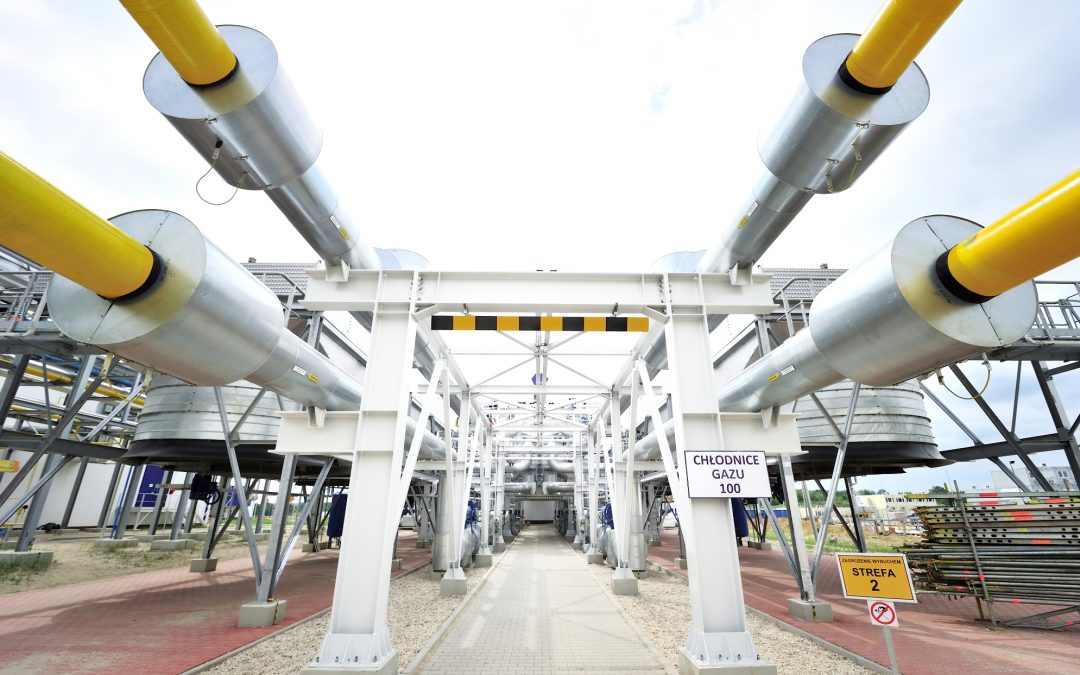By James Jackson
A mixture of long-term planning and cooperation with allies is set to ensure that the energy market in Poland remains stable, despite Gazprom cutting off the country’s gas supplies two weeks ago after it refused to change payments to roubles.
After that sudden decision, Polish climate minister Anna Moskwa assured that “Polish households will not run short of gas” because “for years we have been becoming effectively independent of Russia”.
Her ministry told Notes from Poland that they are “in constant dialogue” with their neighbours and have long “been undertaking serious steps to boost our energy independence” in the knowledge that “Russia cannot be considered as a reliable energy supplier”. As a result, “this abrupt cut-off will not touch our citizens”.
Credit rating agency Fitch agrees, saying that it “does not anticipate major disruption to energy supply in Poland owing to its substantial gas stocks”.
Those gas storage facilities were 76% full at the time Gazprom turned off the tap, far higher than the EU average of 36%, noted Moskwa, adding that “the Polish gas system is one of the few in the EU [that] is able to completely abandon supplies from Russia…thanks to infrastructure investments such as the Baltic Pipe”.
The latter is an almost complete pipeline that will bring natural gas from Norway to Poland via Denmark through a mixture of offshore and onshore pipes. It is due to be completed by October 2022, having received €266 million of EU financing.
Projects like the Baltic Pipe show that the shift away from Russian gas has been a long time coming. In 2019, Prime Minister Mateusz Morawiecki announced that Poland would not renew its contract with Gazprom when it expires this year.
At the start of this month, Poland also activated the smaller GIPL pipeline with neighbouring Lithuania, which will transport 2 billion cubic metres of gas by the end of September.
Meanwhile, the liquified natural gas terminal (LNG) terminal in Świnoujście on the western Baltic coast – construction of which took place between 2011 and 2015 under the previous government – announced that March this year was its busiest ever month, with five shipments of LNG arriving from the United States.
Since it ceased supplies to Poland, Gazprom has also claimed that Poland is still getting Russian gas from Italy, France and Germany through a method known as virtual-reverse flows, whereby operators can reverse the flow of a pipeline.
But Poland will also be replacing gas with other energy sources, with some experts seeing this as an opportunity to boost investment in renewables. In March, when the government outlined its intention to end all energy imports from Russia this year, Morawiecki said that this would involve “an extensive plan also to create renewable energy”, so that Poland no longer has to “buy expensive raw materials”.
According to analysis by Bruegel, a think tank, Poland allocated €13.49 billion of its EU post-pandemic recovery fund to invest in renewable energy, after already increasing solar capacity by over 50% in 2020.
Jacek Pniewski, a physicist and editor of Nauka o Klimacie, a popular climate education website, welcomes the fact that “the government finally came to the conclusion that fossil fuels are not a long-term solution” and that “the goal should be to move to renewables”.
However, Pniewski also told Notes from Poland that “there is a risk that some ministers may want to still use or increase the use of coal”. Likewise, climate campaigner Mark Maslin told The Independent that “Poland may revert back to dirty coal as they have huge reserves – which will cause a spike in their carbon emissions”.
In January, Poland’s state energy giant Orlen signed a deal with Saudi Arabian Aramco. This will keeps oil supplies secure by supplying up to 400,000 barrels per day, half of Poland’s oil, Orlen CEO said earlier this month.
Alongside fossil fuels and renewables, a more left-field option for replacing Russian energy has been floated by private investors, with a government backed campaign behind it: nuclear.
In April, a Korean nuclear energy supplier submitted a “technical and price offer” for the construction of six APR-1400 reactors. Poland had already received a similar proposal from French EDF, with further interest coming from the US-based Westinghouse. However, with the first reactors not likely to go online until the 2030s, this is more of a long-term solution.
Main image credit: PGNiG press materials

is a British freelance journalist based in Berlin. Alongside news and politics, he also writes about culture and can be followed on Twitter @derJamesJackson.




















